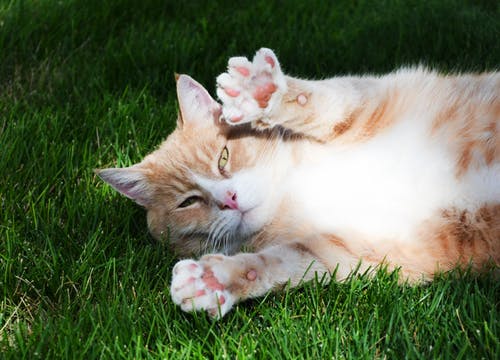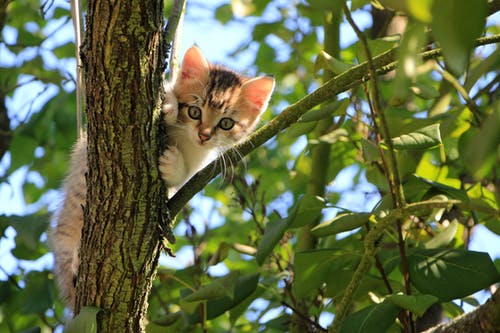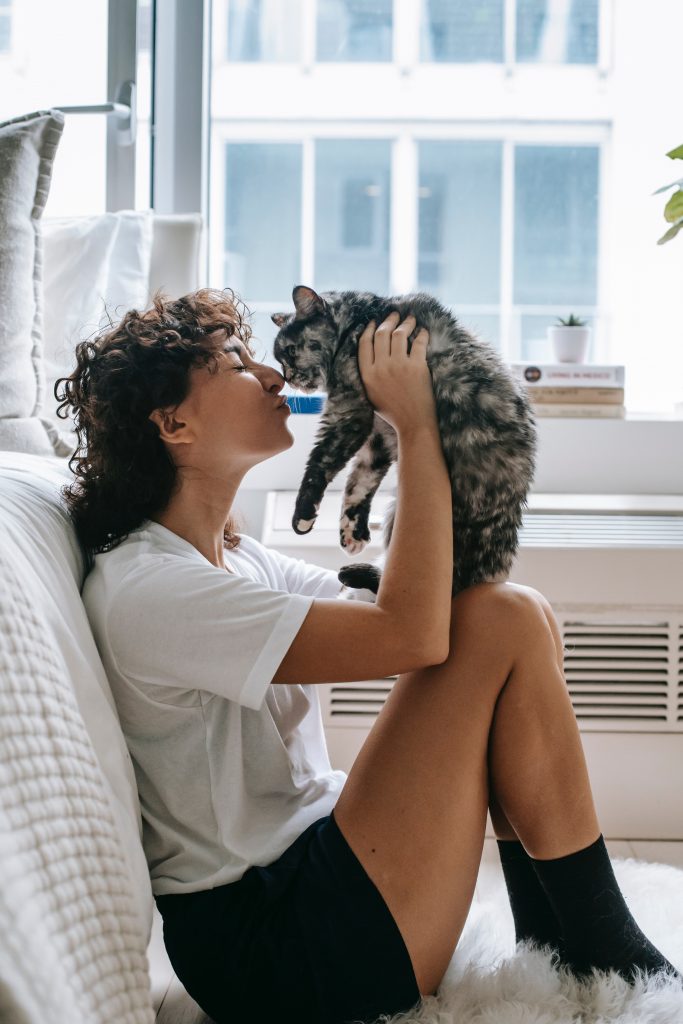Whether or not cats should be allowed to live outside is the topic of much debate, with strong arguments on either side. If you do allow your cat to go outside freely, there are certain things you must be aware of first. Every pet owner loves their pet and wants to keep them safe, and the outside is full of dangers. Here are some things you need to know before letting your cat outside.
The Risks Of An Outside Life
The lifespan of cats who are allowed to roam outside is drastically shorter than that of an indoor cat because there are so many risks with letting your cat outside. On average, cats with free-roaming outdoor access live 10-12 years less than indoor cats. The outside is dangerous, so it’s vital that you are educated about the threats to your cat and what you can do about them before letting your cat outside.
Roads
Perhaps the biggest risk to your cat is roads and the cars that drive on them. People often don’t see cats when they are driving. Cars pose an even bigger threat at night, because not only is it harder for drivers to see in the dark, but cat’s eyes often can’t adjust quick enough to sudden bright headlights, ending up with them temporarily blinded and potential tragedy. Sometimes, too, cats can try to cross a road when there are cars and misjudge their speed. When trying to run across a road before a car, they can end up getting hit.
Disease
Outdoor cats interact with other animals, increasing their risk of disease. Wildlife certainly isn’t vaccinated, and you never know if other pets in the neighborhood are either. If you’re going to let your cat outside, you must have them vaccinated so that they won’t get sick or spread disease.
Fights
Cats are extremely territorial and may actively fight other cats and animals that they perceive to be trespassing on their territory. Because cats are territorial animals, this can lead to consistent issues if there are multiple cats in a neighborhood that don’t get along. This causes social pressure and greatly increases the likelihood of injury from fighting. Some cats will even take their displeasure beyond fighting by going into the other cat’s yard or house, which can escalate the problem even further.
Fighting can lead to injury and disease. Spaying or neutering your cat will curb their aggression, lessening the potential for fights. This is another reason to vaccinate your cat, too. In addition, you don’t want your cat to be unable to defend itself in a fight, so you must make sure your cat has their claws. If your cat is declawed, do not let them outside.
They Can Get Lost Or People Can Think They Are Lost
Cats generally don’t stray far from home, usually sticking to a five house radius, though sometimes they can wander up to a mile away. They can still get lost, though, and sometimes people can see them wandering and think they are lost, especially if they do not have a collar. Make sure your cat has a good-fitting collar on at all times outside with an ID tag that has your name and number on it. Microchipping will also provide a means of identification if they wander and get picked up by animal control or a shelter.
Neighbors
Cats can be nuisances to your neighbors. They can intrude on your neighbor’s property, dig up their yards, pee on their yards, and hunt in their space. Your neighbors also may fear disease or that your cat is not spayed or neutered. Outdoor cats contribute significantly to overpopulation, and having your cat ear tipped is the only way for people to know they won’t add to that problem.
Plus, not everyone wants a cat coming onto their property, especially if they have allergies or simply don’t like them. It’s important to be respectful of your neighbors. Try to figure out ways to keep your cat off their property through offering deterrents.
Negative Impact On Environment
Cats hunt, it’s just part of what they do. Even a well-fed cat that’s allowed outside will end up hunting the wildlife. This poses a risk to your cat, with potential injury from wildlife, and also negatively affects your surrounding environment by introducing a predator the wildlife populations don’t account for. Especially in areas with potential endangered species, this poses an easily preventable problem to the wildlife’s habitat.
The Benefits Of An Outside Life
Though it comes with many risks, there are benefits to allowing your cat outdoor access. Cat owners who allow their cats to roam freely often cite these benefits as reasons why cats should be allowed outside and why they think it can be cruel to keep your cat indoors. While it is not at all cruel to keep your cat inside, the outside environment does provide good things for your cat to.
Less Boredom
The outside is an ever-changing atmosphere, and it unfolds endlessly. Less confinement means that there’s less of a chance for your cat to get bored. It also means your cat will be more independent, as they navigate different situations on their own. As cats need lots of stimulation, outdoor access can be wonderful for them by keeping them constantly entertained.
Increased Exercise
Outdoor cats tend to be leaner than indoor cats because they move more. Cats allowed outside naturally roam around more than indoor cats, resulting in higher fitness levels. As cats need plenty of chance to exercise, allowing them outside will naturally give them more incentive to, all by themselves.
Ability To Explore
Cats need a lot of stimulation. If you watch them inside, you’ll notice how they’ll wander all over your house and inspect anything new. Allowing them outside gives them tons of space to explore and inspect.
Is It Cruel To Keep Your Cat Inside?
Although people may think that cats are happier outdoors, the truth is that an indoor cat can be just as happy as one that is allowed outdoor access. Indoor cats live much longer than outdoor cats simply because they do not face all the dangers that outdoor cats do. Given enough stimulation and attention, keeping your cat indoors is not cruel at all, and in fact, keeps them much safer.
How To Keep An Indoor Cat Happy
An indoor cat can live a long, happy life, given the space for natural cat behaviors. This means that it’s important to provide your cat with enough stimulation.
Stimulation And Attention
Frequent play time, toys that allow them to ‘hunt’, and hiding treats and toys around the house offer stimulation for your cat. An indoor cat will often cover the ground of your entire house within a day, so adding little changes to the environment provides things for them to explore.
Cats like to climb, so having a cat tree gives them something other than furniture to climb up on. It’s also good to ensure your cat has sunny areas to roll around and nap in. You can also take your cat on walks with a harness and leash, so that they can have supervised outdoor time.
Risks Of Keeping Your Cat Indoors
Indoor cats are more susceptible to boredom and duress than outdoor cats. The biggest risk for keeping your cat indoors is their emotional wellbeing. This is why providing enough attention and stimulation is absolutely crucial if you keep your cat indoors.
So, Should You Let Your Cat Outside?
Yes, you can let your cat outside. If you do, it’s vital that you are aware of the risks and that they will need more frequent vet check-ups. If your cat is not vaccinated, spayed/neutered, or is declawed, they should not be allowed outside.
Keeping your cat indoors is strongly recommended, because your cat will be much safer than if they were let outside. They will live longer and it is not cruel at all to keep them inside. But you can let them out, it is just important that you know the dangers associated with that.
Here at Skyline Animal Hospital, we’re passionate about keeping your pets happy, safe, and healthy. If you need to schedule any appointments for your cat, or if you have any questions, please feel free to contact us today!






